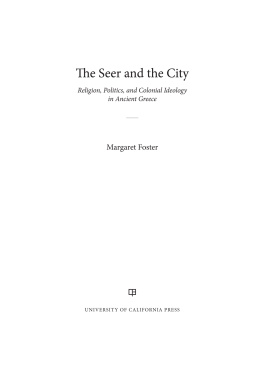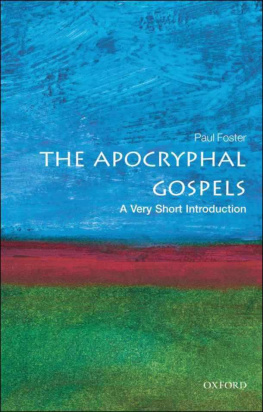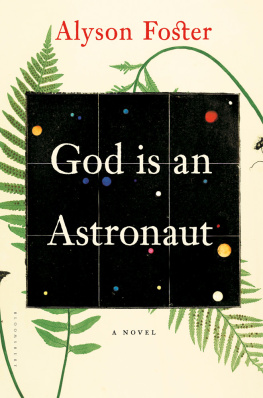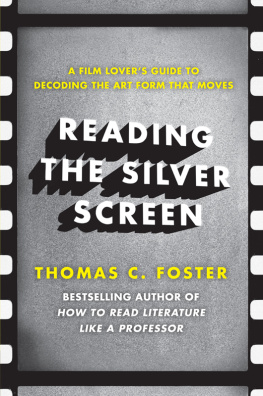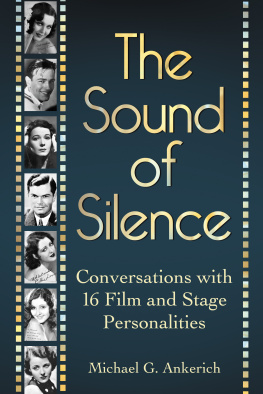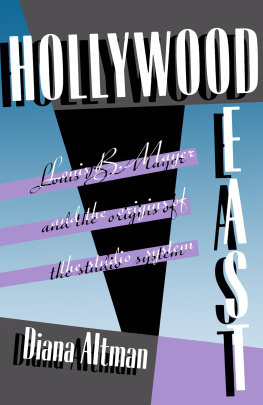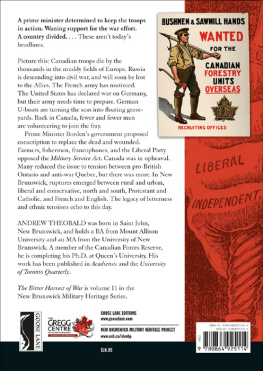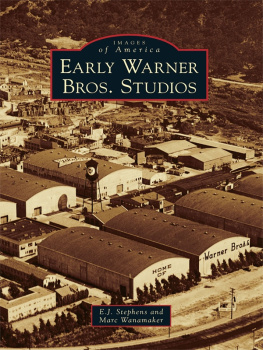Once Upon a Time in Paradise
Once Upon a Time in Paradise
Canadians in the Golden Age of Hollywood
Charles Foster

Copyright Charles Foster, 2003
All rights reserved. No part of this publication may be reproduced, stored in a retrieval system, or transmitted in any form or by any means, electronic, mechanical, photocopying, recording, or otherwise (except for brief passages for purposes of review) without the prior permission of Dundurn Press. Permission to photocopy should be requested from Access Copyright.
Publisher: Anthony Hawke
Copy-editor: Andrea Pruss
Design: Emma Kassirer
Printer: Transcontinental
National Library of Canada Cataloguing in Publication
Foster, Charles, 1923
Once Upon a Time in Paradise: Canadians in the Golden Age of Hollywood / Charles Foster.
Includes index
ISBN 1-55002-464-7
1. Motion picture producers and directorsCaliforniaLos AngelesBiography. 2. Motion picture actors and actressesCaliforniaLos AngelesBiography. 3. CanadiansCaliforniaLos AngelesBiography. 4. Motion picture industryCaliforniaLos AngelesHistory. I. Title.
PN1998.2.F668 2003 791.43092279494 C2003-904046-1
1 2 3 4 5 07 06 05 04 03

We acknowledge the support of the Canada Council for the Arts and the Ontario Arts Council for our publishing program. We also acknowledge the financial support of the Government of Canada through the Book Publishing Industry Development Program and The Association for the Export of Canadian Books, and the Government of Ontario through the Ontario Book Publishers Tax Credit program, and the Ontario Media Development Corporations Ontario Book Initiative.
Care has been taken to trace the ownership of copyright material used in this book. The author and the publisher welcome any information enabling them to rectify any references or credit in subsequent editions.
J. Kirk Howard, President
Printed and bound in Canada.
Printed on recycled paper.
www.dundurn.com
Dundurn Press
8 Market Street
Suite 200
Toronto, Ontario, Canada
M5E 1M6
Dundurn Press
2250 Military Road
Tonawanda NY
U.S.A. 14150
Once Upon a Time in Paradise
Table of Contents
Prologue
When sound arrived in Hollywood at the end of 1927, it was the Warner Brothers picture The Jazz Singer that made all the headlines.
Jack Warner, head of the studio, was born in London, Ontario. But he was not alone in Hollywood. Hundreds more Canadians were already in place waiting to show that they had the knowledge and the voices to make this new medium into the success everyone dreamed it could be. In the years ahead they were joined by hundreds more Canadians. Not all became stars, and not all were successful, but those who did reach the top are worth remembering.
Whether you believe Jack Warners claim that he was the first to produce a sound film, or whether you prefer to accept the word of Louis B. Mayer, head of the biggest studio in Hollywood, Metro-Goldwyn-Mayer, that his genius Douglas Shearer was the first to put real sound on film, or whether you want to think that director Allan Dwan should be called the first real name in sound because, well ahead of Warner, he had filmed a newsreel with sound for Movietone News in the summer of 1927, there is no doubt about one thing. They were all Canadians.
The Academy of Motion Picture Arts and Sciences was created by Louis B. Mayer. In 1926, before sound arrived, Mayer called all the big studio heads in Hollywood together and laid before them his plan to raise the image of the film industry in the eyes of the picture-going public.
There had been many scandals in the motion picture industry in the years before 1926, and Mayer felt it was time to do something to stop the bad headlines that had upset too many people and hurt the industry. Some films were banned, others were never shown, because they starred or featured people who had hit world headlines in an unsavoury manner. It should be mentioned that no Canadians were ever involved in these major scandals.
The Academy of Motion Picture Arts and Sciences ruled before the 1926 award ceremonies that The Jazz Singer was ineligible to get any award since it was unfair that silent films should have to be compared to this early arrival on the sound scene.
Records show that Louis B. Mayer, who had always feuded with Jack Warner, was the mover of the motion to keep Warners film out of the competition.
In a strange gesture, the Academy did allow The Jazz Singer to compete in two categories, Writing and Engineering Effects. How the decision was made to award the first years statuettes was never revealed, but there can be no doubt that Mayer had considerable influence in the awards. Unlike the present Oscars, when only the company handling the ballots knows the results until the envelopes are opened on stage, the members of the Academy board did know the results long before the actual ceremony.
When it became obvious that the sound film everyone was talking about wasnt even going to take home the coveted statuette in either the Writing or the Engineering Effects category, the Academy members, over the protests of Louis B. Mayer, voted to give a special award to Warner Brothers for The Jazz Singer, described in the citation as the outstanding pioneer talking picture which has revolutionized the film industry.
Mary Pickford, reminiscing in her eighties, said with a laugh,It was once said that Mayer had ten votes for every one we got to cast. That may have been stretching things more than a little, but there can be no doubt that Mayers power in Hollywood allowed him to pressure voters to cast their ballots the way he wanted them to vote.
All the people listed above were Canadian, if you will agree that Louis B. Mayer deserves to be called Canadian since he arrived in Saint John, New Brunswick, at the age of only eighteen months with his refugee parents from Russia and remained in his new hometown until he reached his late teens.
Louis B. Mayer, Douglas Shearer, and Mack Sennett, still King of Comedy in Hollywood when sound arrived, were all given star treatment in Stardust and Shadows, along with fifteen more Canadians who played major roles from the very beginnings of the industry in New York to the arrival of sound in Hollywood.
One more thing before we get around to talking about Once Upon A Time In Paradise. Were you aware that in the second, third, and fourth years of the Academy Awards three Canadians won the Best Actress Oscar (even if it wasnt called an Oscar until the third year of the ceremonies)?
Mary Pickford was named best actress in 192829 for her role in Coquette, her first sound film. The film was made by United Artists, the company she, along with her husband, Douglas Fairbanks, and comic genius Charlie Chaplin, controlled.
Norma Shearer was nominated twice at the 192930 ceremonies for her performances in The Divorce and The Love Parade, both MGM films. The Divorce won her the statuette.
Marie Dressler gave the winning Oscar performance in the 193031 awards. For MGMs
Next page


